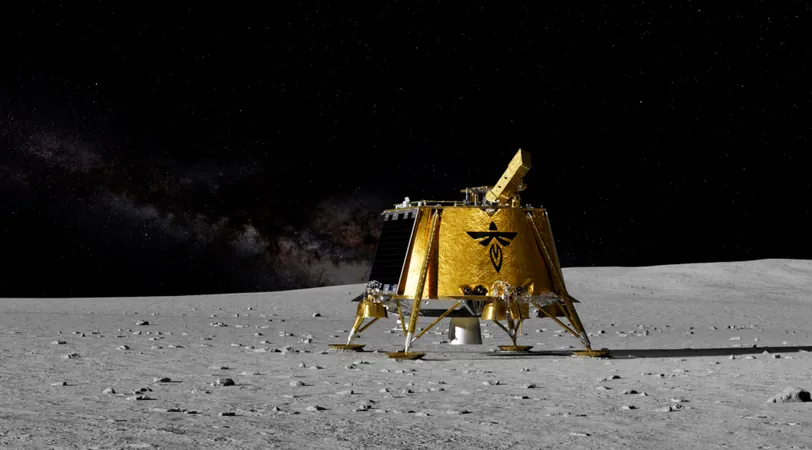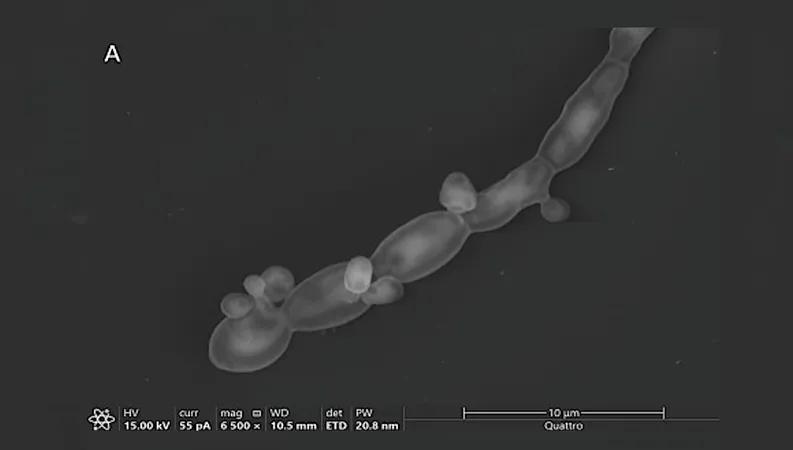
Firefly and ispace Gear Up for Historic Lunar Missions!
2025-01-06
Author: Daniel
As we approach an exciting new era of lunar exploration, the countdown is on for two pioneering landers headed to the Moon. SpaceX's Falcon 9 rocket is set to launch Firefly Aerospace's Blue Ghost and ispace's RESILIENCE during a six-day launch window this month, marking a significant milestone in commercial spaceflight.
Once they are deployed into space, these two lunar landers will embark on extensive journeys teeming with scientific aspirations to lay the groundwork for future lunar missions.
Diverse Paths to the Moon:
Firefly's Blue Ghost will start by orbiting Earth for 25 days, ensuring all systems are in top condition before making the four-day leap to the Moon. After entering lunar orbit, it will spend an impressive 16 days there. This roughly 45-day odyssey is designed to perform critical health checks and scientific experiments during the entire trip.
After arriving on the lunar surface, Blue Ghost aims to operate for two weeks during daytime, engaging in various scientific activities, before entering a dormant phase as night falls on the Moon.
Meanwhile, ispace's journey will take a scenic route—akin to its successful but challenging HAKUTO-R mission in 2022. This time, the RESILIENCE lander will utilize a low-energy orbital trajectory, cleverly using gravitational assists to facilitate a landing approximately four to five months post-launch.
What's Onboard?
Both lunar landers are equipped with a remarkable array of scientific hardware essential for establishing a sustainable presence on the Moon.
Firefly's Blue Ghost will carry 10 distinct science payloads, including instruments designed to study lunar regolith—the Moon's surface material. It will also test navigation capabilities and showcase radiation-tolerant computing systems. Notably, this mission will mark the first demonstration of NASA's innovative Electrodynamic Dust Shield, which aims to clear lunar dust from important surfaces, enhancing the performance of future solar panels.
Turning our gaze to ispace, the RESILIENCE lander is harboring the first European micro rover—TENACIOUS. A product of collaboration among the Luxembourg Space Agency, the European Space Agency (ESA), and ispace Europe, this lightweight rover, weighing around 11 pounds, is primed to photograph the Mare Frigoris region, while also capturing images of the regolith collected by the RESILIENCE lander.
In addition to the TENACIOUS rover, RESILIENCE is carrying five additional payloads poised to drive advancements in lunar research and exploration.



 Brasil (PT)
Brasil (PT)
 Canada (EN)
Canada (EN)
 Chile (ES)
Chile (ES)
 Česko (CS)
Česko (CS)
 대한민국 (KO)
대한민국 (KO)
 España (ES)
España (ES)
 France (FR)
France (FR)
 Hong Kong (EN)
Hong Kong (EN)
 Italia (IT)
Italia (IT)
 日本 (JA)
日本 (JA)
 Magyarország (HU)
Magyarország (HU)
 Norge (NO)
Norge (NO)
 Polska (PL)
Polska (PL)
 Schweiz (DE)
Schweiz (DE)
 Singapore (EN)
Singapore (EN)
 Sverige (SV)
Sverige (SV)
 Suomi (FI)
Suomi (FI)
 Türkiye (TR)
Türkiye (TR)
 الإمارات العربية المتحدة (AR)
الإمارات العربية المتحدة (AR)